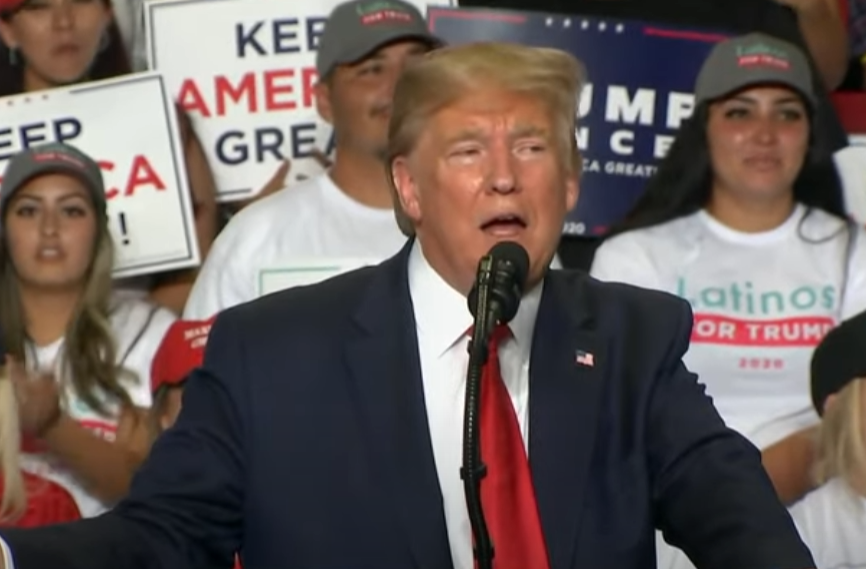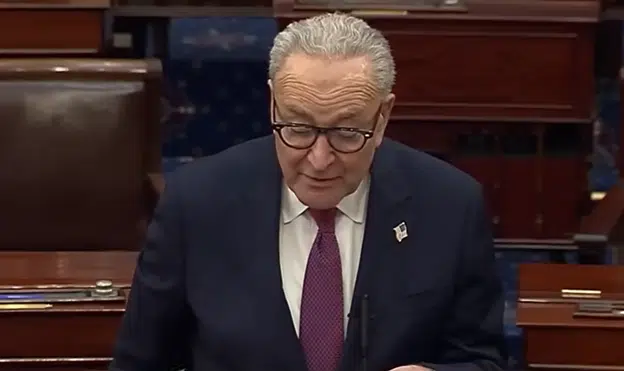
A searing new survey from Gallup is proving that the young and Hispanic voter shift toward President Donald Trump that pushed him over the finish line last November does not appear to be decelerating as Democrats had hoped.
The survey, conducted March 3-16 among 1,002 adults, shows that key coalitions of Americans who formed the bulk of the shift toward President Trump are continuing to uphold a higher view of the president now compared to his first term.
Despite the public meltdown on the left since President Trump assumed office and began acting on immigration, deportation, tariffs, and an audit of the federal government, Trump’s approval rating is higher now than it was in his first term, particularly among groups that moved toward him in 2024.
Gallup data shows President Trump’s overall approval rating has risen three points from 42 percent in the first few months of hist first term to 45 percent today.
However, his approval rating is up a startling twelve percentage points among people of color as a collective compared to his first term, going from just 20 percent in the first few months of 2017 to 32 percent today.
Among Hispanics alone, Trump’s approval rating has risen fifteen percentage points, going from 22 percent in the first few months of 2017 to 37 percent approval today. Trump’s approval rating is also up nine points among Black Americans compared to where it was in the first few months of his first term according to the survey.
Another significant shift has been among younger Americans – who have shifted substantially toward President Trump since his first term. Trump’s approval rating is up six points among voters eighteen to twenty-nine compared to his first term, going from 31 percent in the first few months of his first term to 37 percent today. Among slightly older Millennials and Gen X voters, Trump’s approval rating is up six points as well, going from 40 percent in the first few months of 2017 to 46 percent today. However, among voters over 60, Trump’s approval rating has declined six points, going from 50 percent in the first few months of 2017 to 44 percent today.
Trump has also made gains among an unlikely group – college-educated Americans now hold a more favorable view of the president than they did eight years ago. According to the survey, Trump has gained three points among college-educated voters, going from a 36 percent approval rating in the first few months of 2017 to a 39 percent approval rating today.
YouGov’s data amplifies Gallup’s data. YouGov breaks down presidential approval into overall approval of Trump as a public figure, and approval for how Trump is handling his job as president.
When directly asked how voters feel Trump is handling his job as president, the share of Americans who approve of how he is handling the presidency is higher than his overall approval rating as a public figure.
According to YouGov’s latest survey conducted March 22-25, Americans approve of how Trump is handling his job as president by two points, 48 percent to 46 percent. Hispanics approve of how Trump is handling his job as president by a single point, 48 percent to 47 percent, and young Americans approve of how Trump is handling his job as president by a full eight points, 49 percent to 41 percent.
Immigration appears to be the most notable issue prompting these favorable views, as it is the issue President Trump holds the highest approval rating on among all Americans, including young people and Hispanics.
According to YouGov, Americans approve of Trump’s approach to immigration by seven points, 51 percent to 44 percent. Young people approve of Trump’s immigration policy by three points, 48 percent to 45 percent, and Hispanics approve by one point, 48 percent to 47 percent.
This is notable because it indicates that the electoral shifts toward President Trump we watched over the last eight years are continuing to buoy the president’s approval rating five months after the election.
While Americans do not approve of Trump’s handling of every issue, he is enjoying a much broader level of support from groups outside the traditional GOP core, with young voters and minorities showing increased levels of support compared to 2017. While it does not guarantee that support will stay, it also dispels the idea that support for Trump in 2024 was a reactionary flash in the pan and unsustainable. Whether these voters fully integrate into the conservative movement remains to be seen, but swing voters appear to be giving Trump a chance.
Manzanita Miller is the senior political analyst at Americans for Limited Government Foundation.






